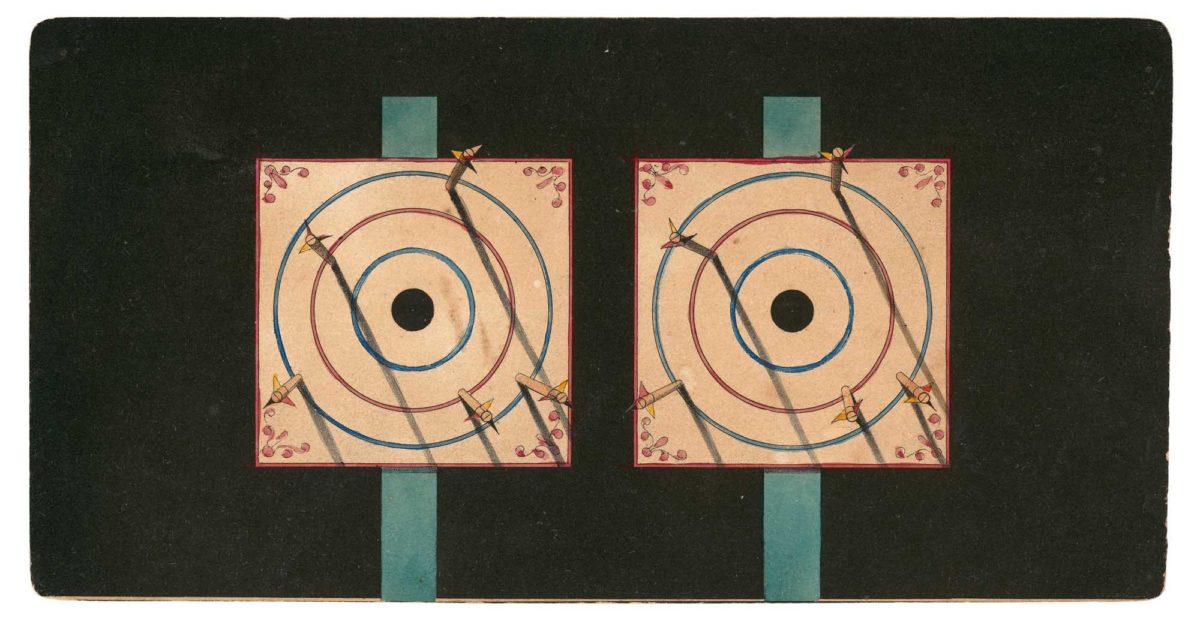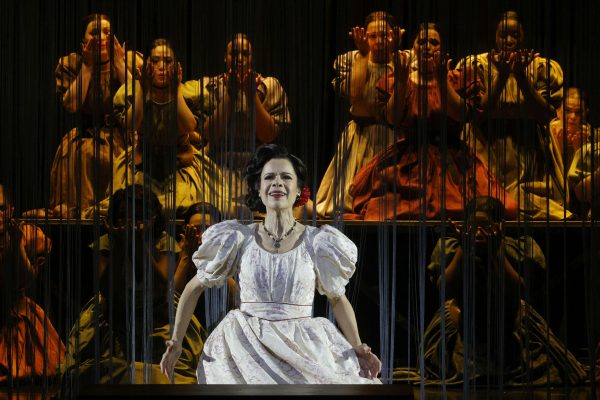
“3D: Double Vision” at LACMA
When your parents were young, a show like this would have been described with just one word: trippy. But let’s add another few hundred words and flesh it out, shall we?
“3D: Double Vision,” curated by Britt Salvesen, is apparently the first-ever survey of 3D objects and their technology to be shown in a North American art museum. The reason why is because it’s a thinking person’s exhibition, unlike a Van Gogh retrospective where you can simply ooh and ahh and everyone knows exactly what you feel (or are pretending to feel).
Mostly, we need to ask ourselves, how much scientific detail and historical material do we want to pack into our craniums? Do we really want to peer at the inner workings or would we rather just kick back and allow the “wow” factor to sweep us away?
Stated in the press notes: “The optimal principle underlying all 3D media is binocular vision–the process by which our brains synthesize the information received by our two eyes into a single, volumetric image.”
That’s also the tone of the show’s accompanying catalogue, edited by Salvesen and co-published by LACMA with DelMonico Books/Prestel. It’s nicely produced, of course, somewhat fact-heavy at the start and thereafter weaving in and out of being engaging and dry. I real it cover to cover before seeing the show, and while I’m not a big fan of the catalogue I found that it prepared me rather well for the exhibition. And, for those who’d like to know, and can probably guess, the exhibition is a lot more fun.
What most people like about 3D imagery is how it lures us into a world of pictures that is usually much more compelling than regular photographs, where, with the latter, we seem to be forever just outside the frame. With 3D, however, one senses an intangible depth, a sort of elusive space. What comes to mind as I write this is the 3D clip from “The Walk” (2015) that’s shown in one of the makeshift theaters. That’s the Robert Zemeckis film about Philippe Petit who tightroped between the two towers of the lately-departed World Trade Center in New York.
Of course, 3D wasn’t always so exciting.

Stereoscopic viewers were a Victorian craze, beginning in the 1850s and lasting until the 1880s, before being resurrected in other forms, to be noted below. As Erkki Huhtamo tells us in the catalogue, “The stereoscope is a device for viewing stereoscopic (or, as we say these days, 3D) images. It is the ancestor of View-Master toys and virtual reality helmets.”
And she goes on to add: “The stereoscope was arguably the first mass-disseminated domestic media machine, and the countless stereoviews the first true visual ‘software’ that permeated homes and the imaginations of their inhabitants.” Also, “The stereoscope brought the world outside to the living room, preparing the ground for radio and television.”
Despite the rage for them, many of those early stereo stereoscopic views are rather underwhelming (those in the book, at least). When the scenes they depict are too far away the contrast simply dissipates. Also, if the Victorians had been, well, a little less Victorian, there might have been a greater percentage of nudes: The only one in the catalogue is a fairly discrete image by Auguste Belloc, from 1850 or 1851. It’s a lovely, inviting and intimate, blue-tinted work, more thoughtful than erotically charged.

Another foray into 3D was the Kaiserpanorama (or Imperial Panorama), patented in 1888, which seems to have subbed for an old-fashioned peep show. The last of its (original) species gave up the ghost in 1939. By then, Salvesen writes, it had “been rendered all but obsolete, its pleasures enjoyed only by bored tourists and sensitive writers.” Sensitive writers such as? Well, Franz Kafka. How does that grab you?
Motion pictures
Hollywood, of course, has had various affairs with 3D films, one of them in the early 1950s beginning with “Bwana Devil” in 1952, and another in the early 1980s starting with “Comin’ at Ya!” Since the mid-2010s it seems there’s been a steady number of 3D releases, best enjoyed (as this professional moviegoer will tell you) on an IMAX screen. 3D television? Umm, not so much. Either way, though, the technology only gets better and better.


But there are two kinds of 3D imagery that don’t require eyewear, holograms and lenticular prints. The latter have a ridge-like texture and you’ve seen them as postcards or bookmarks. Most are fairly small, but Mariko Mori’s “Birth of a Star” (1995) is larger than a movie poster.
In the catalogue, Gloria Sutton discusses Dan Graham’s “Binocular Zoom” (1969-70), Lygia Clark’s “Diágolo: Óculos” (1968), and Simone Forti’s “Striding Crawling” (1977), as well as other work by the latter. It’s somewhat tedious reading (reflecting her subjects?), but is perhaps an indispensable part of the survey.
Rather surprisingly, some of the more recent experimental 3D works, such as Lucy Raven’s “Curtains” (2014) and Trisha Baga’s “The Story of Painting” (2012) are not that compelling, and certainly much less so than the oil-on-canvas “Triangular Planes” that Oskar Fischinger created in 1949, or nearly 70 years ago. They are, however, part of the ongoing 3D dialogue. There’s also a room with two pieces by William Kentridge, who was the subject of a memorable LACMA exhibition in 2002, but we don’t get a sense of his genius here, which in more recent times includes his opera sets for “Lulu” and “The Nose.”
There’s other intriguing work in the show, such as Michael Snow’s “Rediface” (1986) and Thomas Ruff’s “3D-ma.r.s.08” (2013), but hands-down it’s the snippets of 3D film, some from very early on and some from megahits like “Titanic” and “Avatar” that are most impressive.

3D: Double Vision manages to educate, enlighten, and entertain all at once, and proves to be an amusement park for the eyes. Rarely do science and magic share the spotlight with such satisfying results. It’s on view through March 31 at the Los Angeles County Museum of Art, 5905 Wilshire Blvd., Los Angeles. Details at lacma.org. ER










